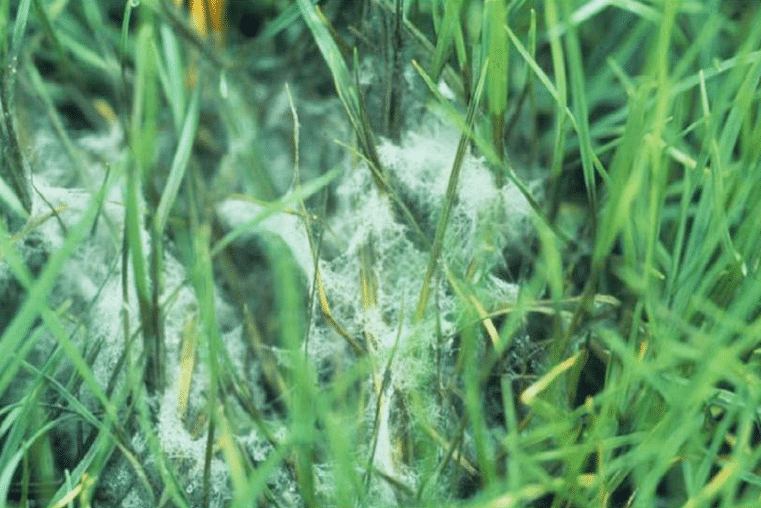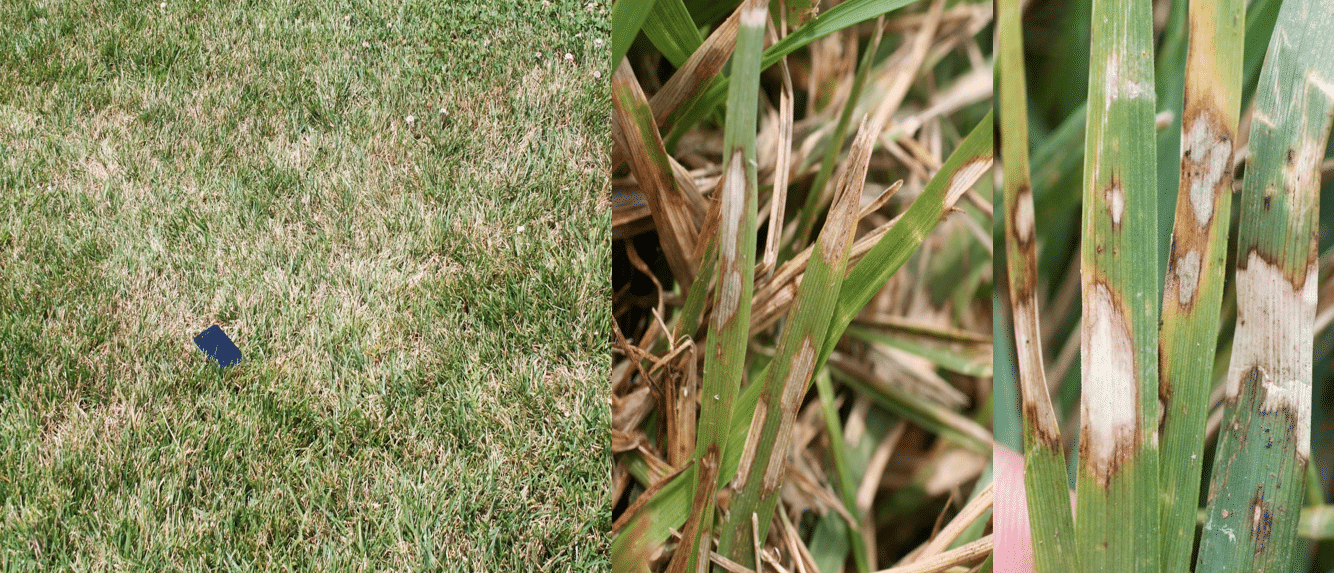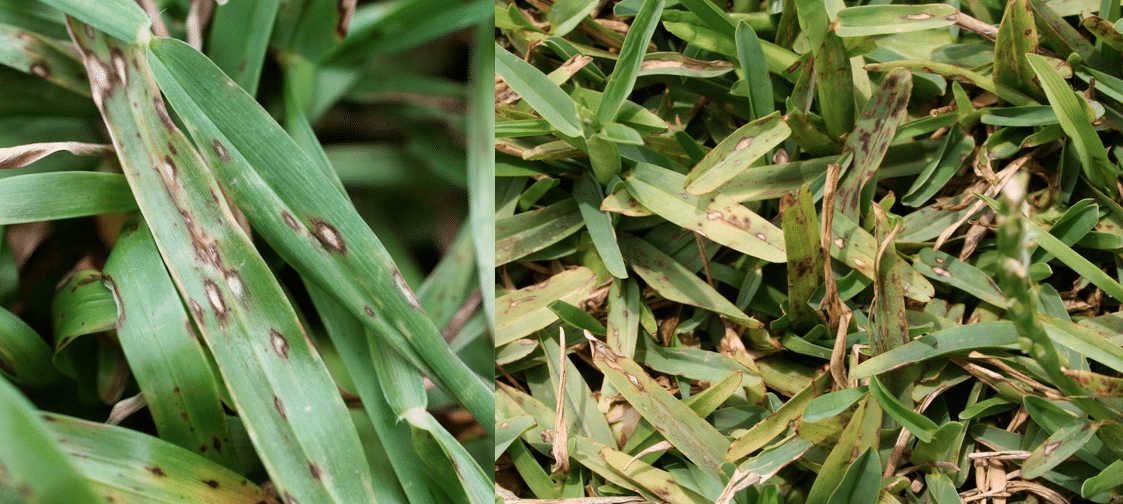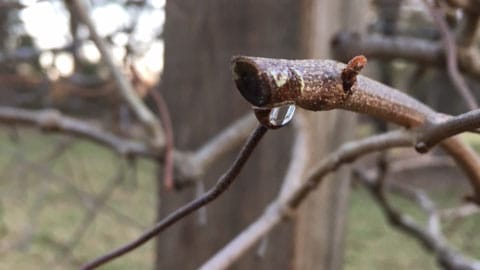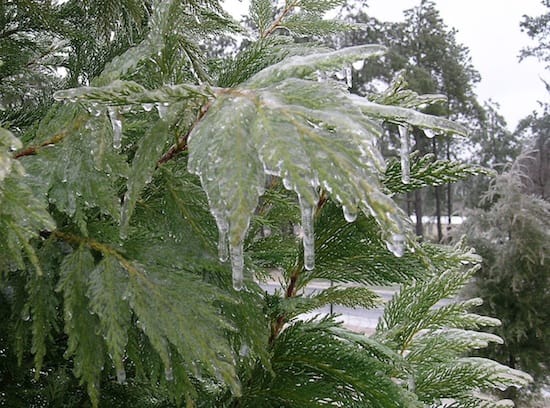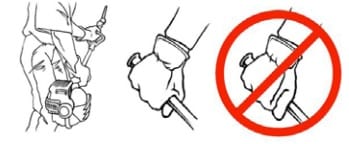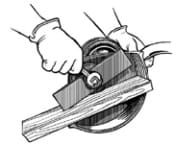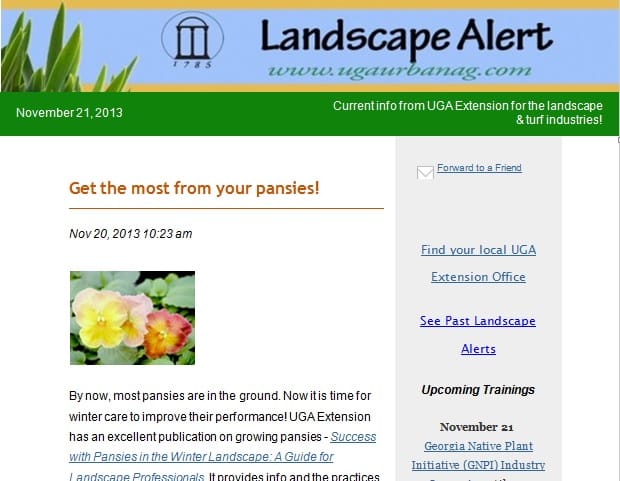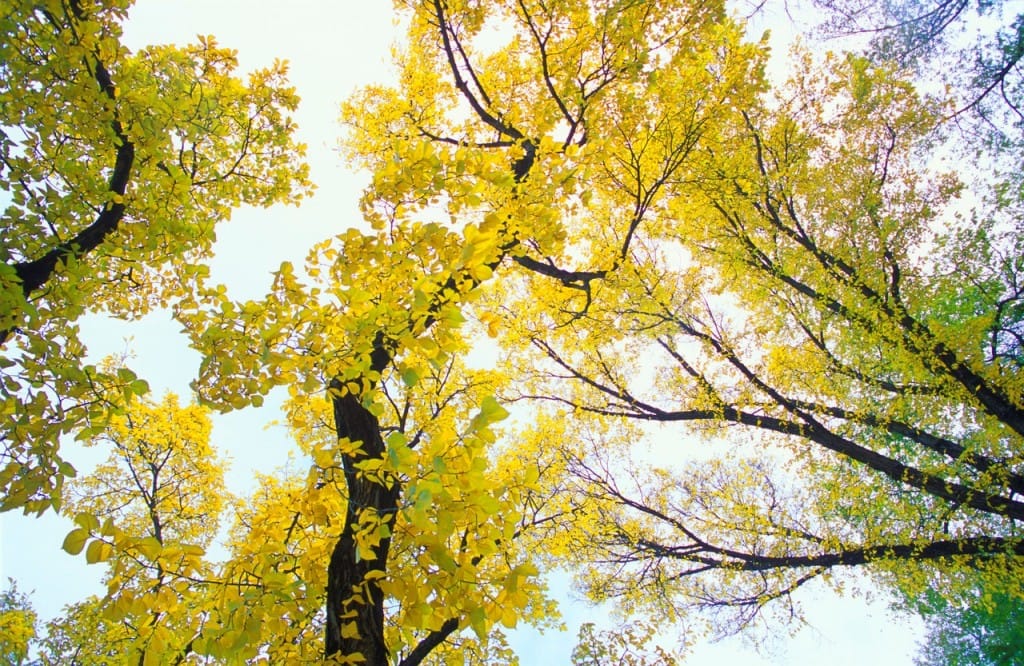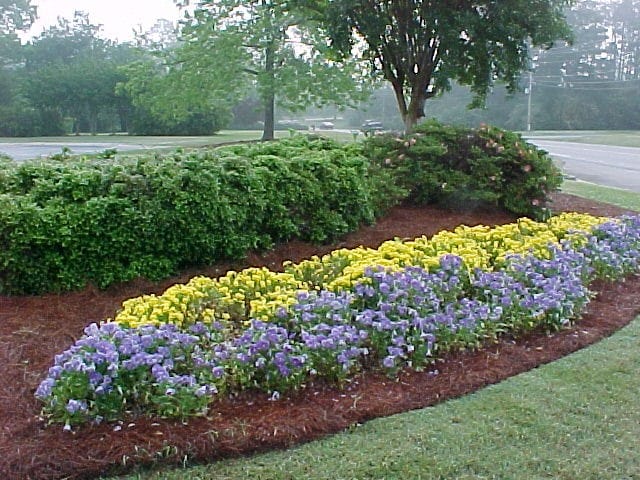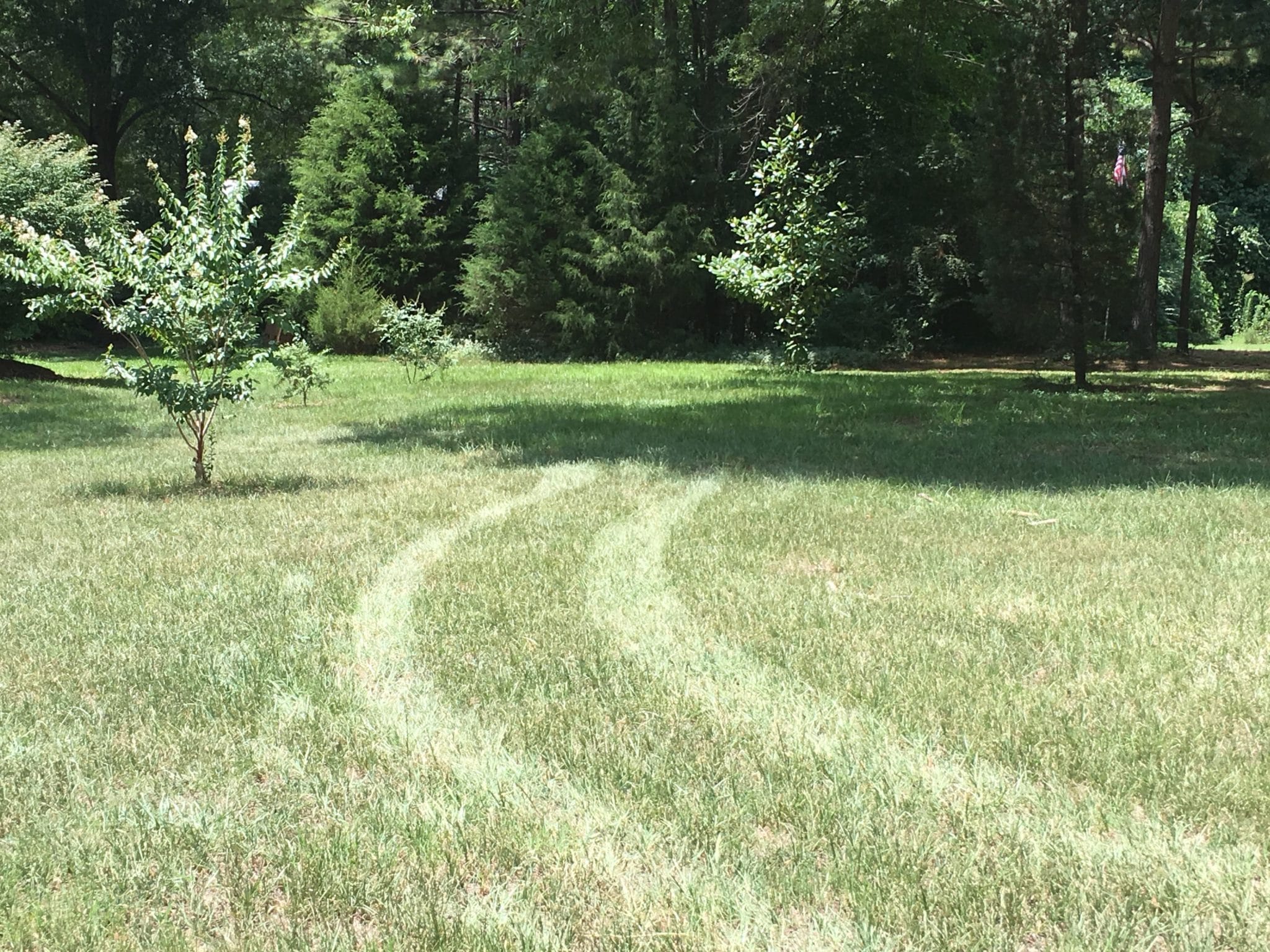
Tips for Managing Drought Stressed Turfgrass
During periods of hot and dry weather, certain modifications to your lawn maintenance practices will help to carry your turfgrass through periods of inadequate rainfall and reduce losses. The height of the warm-season turfgrass growing season spans May through August. Given average conditions (regular rainfall and moderate temperatures), bermudagrass, zoysiagrass, St. Augustinegrass, centipedegrass, and other warm-season species respond quickly to cultural and maintenance practices such as mowing, fertilizing, aerating, topdressing, and weed management. However, the summer of 2016 has delivered hot and dry weather with less than normal rainfall. With August approaching, now is the time to fine tune your turf management program to salvage an acceptable appearance while minimizing growth until environmental factors improve.
The first order of business is to recognize moisture stress in turfgrasses in the early stages. Look for areas with a dull bluish-gray cast. Additionally, take note of footprints and tire tracks in the turf that do not seem to rebound.
Dr. Clint Waltz, UGA Extension Turfgrass Specialist, suggests these tips for managing turfgrass during drought periods:
- Raise the cutting height within the recommended mowing range
- Reduce fertilizer applications until conditions improve
- Modify herbicide programs during high temperatures and moisture stress
- Water deeply & Infrequently
- Grasscycle
- Use water conserving and drought tolerant turfgrasses
Raise the Cutting Height
Turfgrass stress can be reduced by using a sharp mower blade and raising the cutting height by 1/2″ or to the tallest allowable height of the recommended mowing range during drought. A clean cut also reduces moisture loss through wounds and minimizes entry points for disease. Taller shoots promote deeper roots and a dense canopy can help to reduce ground surface temperatures and conserve moisture. Grasscycling (mulching clippings versus bagging) can also help to conserve moisture.
Reduce Nitrogen Applications
Plant growth requires water. Without water, the benefits of nitrogen are not optimized and you may be wasting product. Promoting heavy top growth amidst drought conditions increases water demand. Reduce rates or postpone fertilizer applications until environmental conditions improve to fully realize the benefits of fertilizer while saving water and reducing turfgrass stress.
Modify Herbicide Programs During High Temperatures and Drought
Many herbicides act upon plant growth processes and can be less effective during periods of drought when weeds are not actively growing. In addition, certain herbicides may cause damage to drought-stressed turf or non-target landscape plants due to volatilization and drift during high temperatures. Review your pesticide labels for specific information regarding temperature requirements, watering requirements, and proper application.
Water Deeply and Infrequently
The optimum watering schedule can be roughly determined by observing the number of days that pass between signs of moisture stress. Apply sufficient water to saturate the root zone to a depth of 6-8 inches. Clay soils and sloped areas may require staggered watering intervals to allow time for water infiltration between cycles and prevent runoff. Irrigating in early morning conserves water by reducing evaporation and drift. A good practice is to align watering schedules with drought management rules so that in the event of a declared drought, the appropriate watering program is already in place. As of July 26, 2016 there are no official declarations of drought by state or local authorities in Georgia and responsible landscape and lawn watering may take place between the hours of 4:00pm and 10:00am in accordance with the Georgia Water Stewardship Act of 2010. In the event that water resources require a drought response level 2, watering programs would need to be adjusted for the odd-even schedule by address.
Use Water Conserving and Drought Tolerant Turfgrass Cultivars
The University of Georgia Turfgrass breeding programs continue to make excellent strides in developing improved cultivars with low water use and high drought tolerance. For new installations or where turfgrass replacement is needed, look for improved certified cultivars such as TifTuf bermuda. Visit www.GeorgiaTurf.com for more information on selecting turfgrasses.
THE LOOK AHEAD: JULY & AUGUST
| DATE: |
TITLE |
DESCRIPTION |
DETAILS |
| July 27 |
UAC Industry Issues Lunch + Learn.
Details & Registration |
Beat the Heat and Earn 2 Category 24 GA Pesticide Recertification Credits or 1 Private |
LOCATION: Snellings Walters Insurance Agency, 1117 Perimeter Center W, Atlanta GA 30338
TIME: 11:30 am – 1:30 pm
COST: $20 for UAC members/$25 for visitors. Registration includes lunch. |
| August 4 |
UGA Turfgrass Research Field Day
Details & Registration |
Acres of Information & CEU Credits. Discover the latest turfgrass information, products, and equipment. |
LOCATION: UGA-Griffin Campus 1109 Experiment Street
Griffin, GA 30223
TIME: 8:00 am – 2:30 pm
COST: Visit georgiaturf.com for Registration Details |
| August 9 |
Georgia Certified Plant Professional (Plant ID & Written Exams)
Details & Registration |
The Georgia Center for Urban Agriculture Offers Achievement, Advancement, & Credibility through Professional Certification. |
LOCATION: Gwinnett Technical College
5150 Sugarloaf Pkwy, Lawrenceville, GA 30043
TIME: 9:30 am – 1:30 pm
COST: $165 For details, visit gcpp.info |
| August 31 – September 1 |
SEGreen Landscape & Plant Conference
Details & Registration |
See, hear, and make more green at SEGreen, the roadmap to the future for Southeast growers, landscapers, and retailers. |
LOCATION: Athens Classic Center
300 N Thomas St, Athens, GA 30601
TIME: 7:00 am – 6:00 pm
COST: For details, visit segreen.org |
| August 31 – September 1 |
(SEGreen Conf.)
Georgia Certified Landscape Professional (Written & Hands-On Exams)Details & Registration |
The Georgia Center for Urban Agriculture Offers Achievement, Advancement, & Credibility through Professional Certification. |
LOCATION: Athens Classic Center
300 N Thomas St, Athens, GA 30601
TIME: 7:00 am – 6:00 pm
COST: $165 For details, visit gcpp.info |
